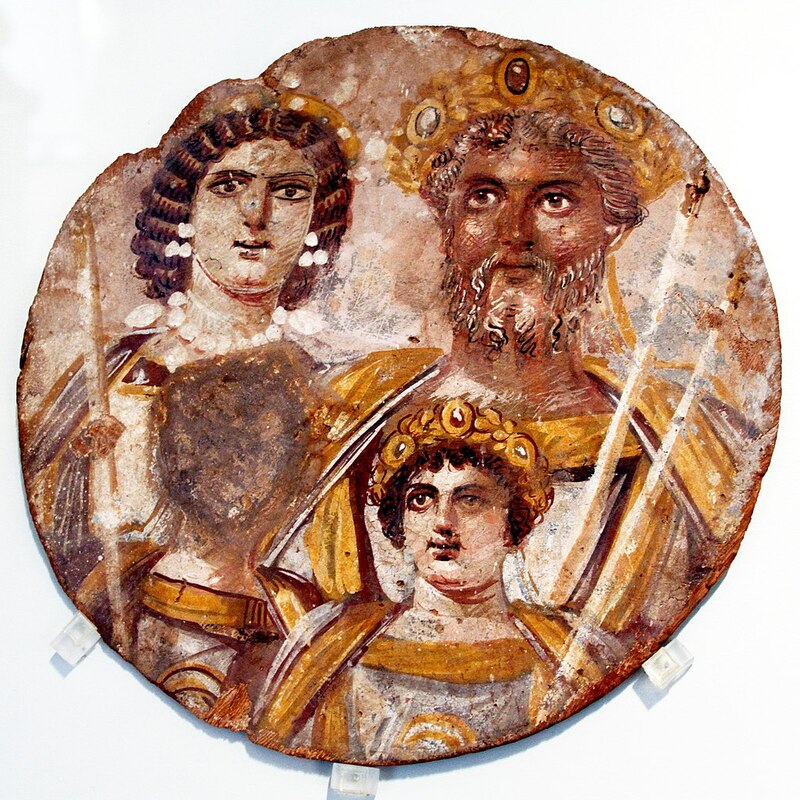Severan tondo
Type:
Panel paintings
Date:
ca. 200
Location or Findspot (Modern-Day Country):
Egypt
Dimensions:
30.5 cm
Description:
This painting in tempera on wood was likely made to celebrate Emperor Septimius Severus's (r. 193–211) visit to Egypt in 199 CE; its materials and technique resemble those of contemporary Fayyum mummy portraits. It depicts him with his family: his wife, Julia Domna, and their two sons, Geta and Caracalla. The male members of the family wear and hold imperial insignia: jeweled gold diadem, gold-trimmed clothing, scepter. Septimius Severus was born in Libya (where he added many architectural monuments to his birthplace at Lepcis Magna) and is shown with darker skin; his wife was from Syria.
After Caracalla had his brother murdered in 211, ten months after their father's death in Britain, Geta's images and his name were removed from this and works in other media. This process is called damnatio memoriae (damning of memory), although that was not a Roman term. No attempt was made to completely obliterate the memory of Geta—his body is still visible—so his missing face reminded viewers of his brother's superiority.
The panel was originally larger (the end of Gets'a scepter is cut off); when it was cut down and whether it was originally in its current tondo (Italian for circular) form is unknown.
After Caracalla had his brother murdered in 211, ten months after their father's death in Britain, Geta's images and his name were removed from this and works in other media. This process is called damnatio memoriae (damning of memory), although that was not a Roman term. No attempt was made to completely obliterate the memory of Geta—his body is still visible—so his missing face reminded viewers of his brother's superiority.
The panel was originally larger (the end of Gets'a scepter is cut off); when it was cut down and whether it was originally in its current tondo (Italian for circular) form is unknown.
Relevant Textbook Chapter(s):
1
Repository and Online Resources:
• Read more and zoom in on the image with Google Arts and Culture.
• The tondo is in the Antikensammlung of the Staatliche Museen zu Berlin.
Image Credits:
Wikimedia Commons, © José Luiz Bernardes Ribeiro

